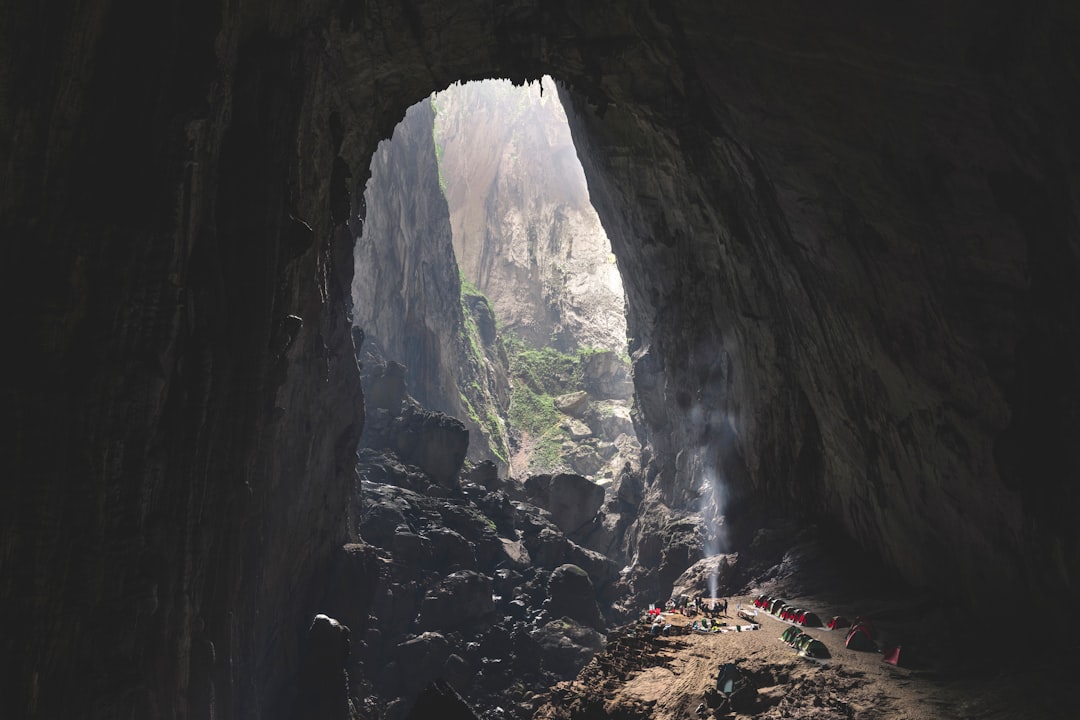The Drake Passage, a body of water situated between the southern tip of South America and Antarctica, is renowned for its tumultuous seas and unpredictable weather. This narrow stretch of ocean, measuring approximately 800 kilometers (500 miles) wide, serves as a critical conduit for maritime traffic between the Atlantic and Pacific Oceans. Its strategic location not only makes it a vital route for shipping but also a significant area for scientific research and ecological studies.
The passage is often characterized by its fierce winds and towering waves, which can create treacherous conditions for vessels attempting to navigate its waters. The Drake Passage is named after the English explorer Sir Francis Drake, who was the first to sail through these waters in the late 16th century. The passage is not merely a geographical feature; it is a dynamic environment that plays a crucial role in global ocean currents and climate patterns.
The confluence of cold Antarctic waters and warmer currents from the north creates a unique marine ecosystem that supports a diverse array of wildlife. As such, the Drake Passage is not only a point of interest for adventurers and researchers but also a vital component of the Earth’s environmental health.
Key Takeaways
- The Drake Passage is a narrow body of water between South America’s Cape Horn and the South Shetland Islands of Antarctica, known for its rough seas and strong winds.
- The opening of the Drake Passage allowed for the formation of the Antarctic Circumpolar Current, which plays a crucial role in regulating the Earth’s climate and ocean circulation.
- The history of the Drake Passage is marked by numerous expeditions and explorations, including those of Sir Francis Drake and Captain James Cook.
- The Drake Passage is home to a diverse range of wildlife, including penguins, seals, and various species of whales, as well as unique marine life such as krill and Antarctic toothfish.
- Traveling through the Drake Passage presents challenges such as extreme weather conditions and rough seas, making it one of the most treacherous sea crossings in the world.
The significance of the Drake Passage opening
The opening of the Drake Passage, which occurred around 30 million years ago, had profound implications for global climate and ocean circulation. This geological event allowed for the establishment of the Antarctic Circumpolar Current, a powerful current that encircles Antarctica and influences weather patterns across the globe. The current acts as a barrier, isolating the continent’s cold waters from the warmer waters of the Atlantic and Pacific Oceans.
This isolation has contributed to the development of Antarctica’s unique climate and ecosystems, making it one of the most pristine environments on Earth. Furthermore, the opening of the Drake Passage facilitated significant changes in marine biodiversity. The current created by this opening has allowed for the migration of various species, leading to a rich tapestry of marine life that thrives in these frigid waters.
The passage serves as a critical habitat for numerous species, including krill, which forms the foundation of the Antarctic food web. The ecological significance of this area cannot be overstated, as it plays a crucial role in supporting not only local wildlife but also global marine ecosystems.
History of the Drake Passage

The history of the Drake Passage is steeped in exploration and discovery. Long before European explorers ventured into these waters, indigenous peoples inhabited the regions surrounding South America, utilizing their knowledge of local geography and marine resources. However, it was not until the late 1500s that Sir Francis Drake became one of the first Europeans to navigate through this challenging passage.
His expedition marked a pivotal moment in maritime history, as it opened up new routes for trade and exploration. In subsequent centuries, the Drake Passage became a focal point for explorers seeking to uncover the mysteries of Antarctica. Notable figures such as James Cook and Ernest Shackleton traversed these waters in their quests for knowledge and adventure.
Their journeys were fraught with peril, as they faced treacherous weather conditions and ice-laden waters. The passage has since become synonymous with adventure and exploration, drawing countless adventurers eager to experience its raw beauty and formidable challenges.
Unique wildlife and marine life in the Drake Passage
| Species | Location | Population |
|---|---|---|
| Wandering Albatross | Drake Passage | 10,000 pairs |
| Antarctic Petrel | Drake Passage | Unknown |
| Blue Whale | Drake Passage | 500-1,000 |
| Leopard Seal | Drake Passage | Unknown |
The Drake Passage is home to an astonishing array of wildlife, making it one of the most biodiverse marine environments on the planet. The cold waters are teeming with life, from microscopic phytoplankton to massive whales. One of the most iconic inhabitants of this region is the Antarctic krill, a small shrimp-like crustacean that serves as a crucial food source for many larger species, including seals, penguins, and whales.
The abundance of krill in these waters supports a thriving ecosystem that attracts researchers and wildlife enthusiasts alike. In addition to krill, the passage is frequented by various species of seals, including Weddell seals and leopard seals, which can often be seen lounging on ice floes. The region is also a haven for seabirds such as albatrosses and petrels, which glide gracefully over the waves in search of food.
The presence of these diverse species highlights the ecological importance of the Drake Passage as a breeding ground and feeding area for many marine animals. The unique combination of cold water upwellings and nutrient-rich currents creates an environment where life flourishes against all odds.
Challenges and risks of traveling through the Drake Passage
Traveling through the Drake Passage is not for the faint-hearted; it presents numerous challenges and risks that can test even the most seasoned mariners. The passage is notorious for its unpredictable weather patterns, with sudden storms capable of generating towering waves that can reach heights of over 30 feet. These conditions can make navigation perilous, leading to potential capsizing or damage to vessels.
As such, careful planning and preparation are essential for anyone attempting to cross this formidable body of water. Moreover, the remoteness of the Drake Passage adds another layer of complexity to travel in this region. In case of emergencies or mechanical failures, assistance may be hours or even days away due to the lack of nearby ports or rescue services.
This isolation necessitates that travelers be well-equipped with safety gear and emergency supplies. Despite these challenges, many adventurers are drawn to the allure of crossing the Drake Passage, viewing it as a rite of passage that offers unparalleled experiences in one of Earth’s last frontiers.
The impact of climate change on the Drake Passage

Climate change poses significant threats to the delicate balance of ecosystems within the Drake Passage. Rising global temperatures have led to increased melting of Antarctic ice sheets, resulting in changes to ocean salinity and temperature. These alterations can disrupt marine life cycles and affect species distribution within the passage.
For instance, warmer waters may lead to shifts in krill populations, which could have cascading effects on predators that rely on them for sustenance. Additionally, changes in ocean currents due to climate change can impact global weather patterns. The Antarctic Circumpolar Current plays a crucial role in regulating temperatures across the Southern Hemisphere; any alterations to its flow could have far-reaching consequences for climate systems worldwide.
As scientists continue to study these changes, it becomes increasingly clear that protecting the integrity of the Drake Passage is vital not only for local ecosystems but also for global environmental health.
Research opportunities in the Drake Passage
The Drake Passage presents a wealth of research opportunities for scientists across various disciplines. Its unique geographical features and diverse ecosystems make it an ideal location for studying marine biology, oceanography, and climate science. Researchers often conduct expeditions to collect data on water temperature, salinity, and nutrient levels, contributing to a greater understanding of how these factors influence marine life.
By monitoring changes in species populations and distribution patterns, scientists can gain insights into broader ecological trends that may affect other regions as well. The passage serves as a natural laboratory where researchers can observe firsthand the effects of environmental changes on marine ecosystems, making it an invaluable resource for advancing scientific knowledge.
The experience of crossing the Drake Passage
For many adventurers, crossing the Drake Passage is an unforgettable experience filled with both excitement and trepidation. As vessels set sail from Ushuaia, Argentina—the southernmost city in the world—travelers are often filled with anticipation about what lies ahead. The journey typically takes around two days, during which passengers may experience everything from calm seas to tumultuous waves that challenge even seasoned sailors.
The thrill of crossing this legendary body of water is often accompanied by breathtaking views of icebergs and distant mountain ranges emerging from the mist. Passengers may spot various wildlife along the way, including seabirds soaring overhead or whales breaching in the distance. Despite potential seasickness caused by rough waters, many find that the sheer beauty and raw power of nature make every moment worthwhile.
For those who complete this journey, crossing the Drake Passage becomes a badge of honor—a testament to their adventurous spirit.
Tourism and exploration in the Drake Passage
Tourism in the Drake Passage has grown significantly over recent years as more travelers seek out unique experiences in remote locations. Adventure tourism companies offer guided expeditions that allow visitors to explore this stunning region while providing educational insights into its ecology and history. These tours often include opportunities for wildlife watching, kayaking among icebergs, and even camping on remote shores.
However, increased tourism also raises concerns about environmental sustainability and conservation efforts in this fragile ecosystem. Tour operators are increasingly aware of their responsibility to minimize their impact on local wildlife and habitats while promoting awareness about climate change and conservation issues among travelers. By fostering responsible tourism practices, stakeholders aim to ensure that future generations can continue to experience the wonders of the Drake Passage without compromising its ecological integrity.
Conservation efforts in the Drake Passage
Conservation efforts in the Drake Passage are crucial for protecting its unique ecosystems from human impact and climate change. Various organizations work tirelessly to promote sustainable practices among tourists and researchers while advocating for policies that safeguard marine habitats. Initiatives include establishing marine protected areas (MPAs) that restrict certain activities such as fishing or shipping in sensitive regions.
Additionally, international cooperation plays a vital role in conservation efforts within this area. Countries involved in Antarctic governance collaborate through treaties like the Antarctic Treaty System to ensure responsible management of resources while preserving biodiversity. Ongoing research initiatives also contribute valuable data that informs conservation strategies aimed at mitigating threats posed by climate change and human activity.
The future of the Drake Passage and its role in Antarctica’s ecosystem
The future of the Drake Passage remains uncertain as climate change continues to reshape our planet’s environments. As temperatures rise and ice melts at unprecedented rates, scientists are closely monitoring how these changes will affect both local ecosystems and global climate systems. The passage’s role as a critical connector between oceans underscores its importance in maintaining oceanic health and regulating weather patterns worldwide.
Looking ahead, it is essential that conservation efforts remain at the forefront of discussions surrounding tourism and exploration in this region. By prioritizing sustainable practices and fostering international collaboration on research initiatives, stakeholders can work together to protect this vital ecosystem for generations to come. Ultimately, safeguarding the integrity of the Drake Passage will be crucial not only for preserving its unique biodiversity but also for ensuring its continued contribution to Earth’s overall environmental health.
The opening of the Drake Passage is a significant event in Earth’s geological history, marking a pivotal moment in the separation of Antarctica from South America and the subsequent changes in ocean currents and climate. For a deeper understanding of this event and its implications, you can explore a related article on the topic by visiting This article provides insights into the geological processes that led to the formation of the Drake Passage and its impact on global climate patterns. WATCH NOW! Drake Passage: Earth’s Deadliest Waters Revealed The Drake Passage is the body of water between the southern tip of South America and the northern tip of the Antarctic Peninsula. It connects the Atlantic and Pacific Oceans. The Drake Passage formed around 30 million years ago during the Eocene epoch as a result of the separation of South America from Antarctica due to tectonic plate movements. The opening of the Drake Passage is attributed to the movement of the Earth’s tectonic plates, specifically the separation of the South American Plate from the Antarctic Plate. The Drake Passage is known for its rough and unpredictable seas, making it a challenging and iconic route for ships traveling between the Atlantic and Pacific Oceans. It also plays a crucial role in the circulation of ocean currents and the exchange of marine life between the Atlantic and Pacific Oceans.FAQs
What is the Drake Passage?
When did the Drake Passage open?
How did the Drake Passage open?
What is the significance of the Drake Passage?
